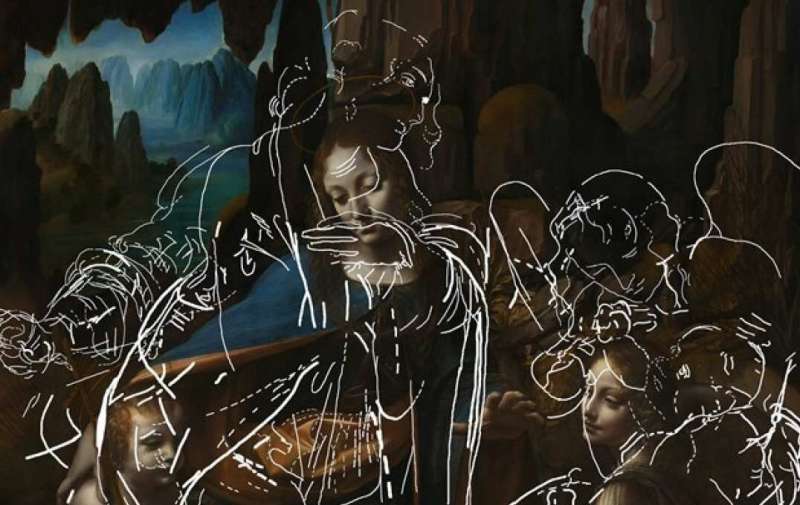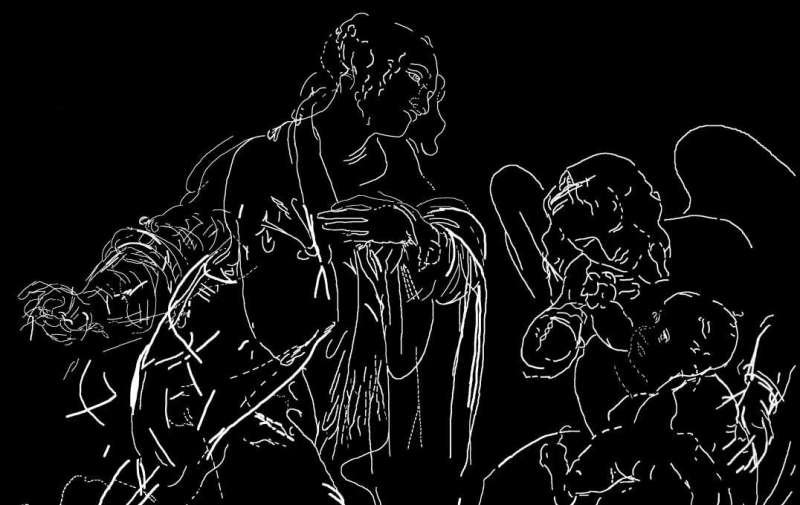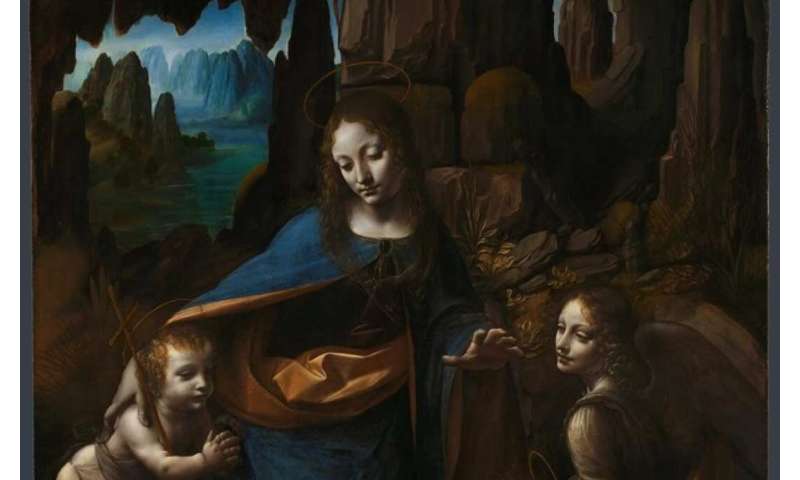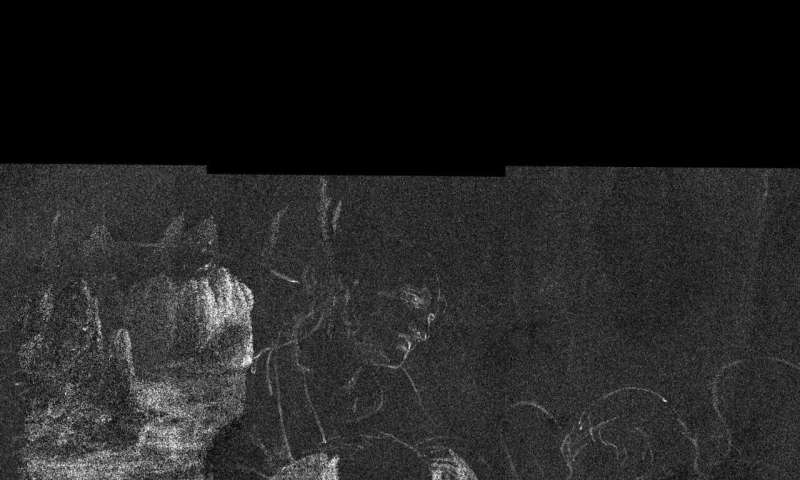New algorithm helps uncover forgotten figures beneath Da Vinci painting

Imperial and National Gallery researchers have used a new algorithm to help visualise hidden drawings beneath Leonardo Da Vinci's Virgin of the Rocks.
Imperial College London's Professor Pier Luigi Dragotti and National Gallery's Dr. Catherine Higgitt used the new algorithm combined with a technique called macro X-ray fluorescence (MA-XRF) scanning, which maps chemical elements within paintings.
In doing so they revealed, more clearly than ever before, the hidden figures that Leonardo first drew before changing his design to the one that he eventually painted. These included abandoned images of an angel and the Infant Christ.
Professor Dragotti, of Imperial's Department of Electrical and Electronic Engineering, said: "It was like looking for a needle in a haystack, but such a great feeling to see the wings and head finally uncovered."
When art meets science
Researchers at the National Gallery had already discovered, using infrared imaging, parts of Leonardo's initial drawings underneath the painting's surface, which included the Virgin in a different pose placed higher up on the panel.
More recently the team used MA-XRF to non-invasively scan each pixel of the painting to detect different chemical elements within the materials Leonardo used in the painting.

They found that the drawing for the hidden first composition contained zinc, making it possible to reveal more forgotten figures—including the Infant Christ and a winged angel at the right where now only landscape is visible.
At Imperial, Professor Dragotti developed the algorithm to automatically process the huge amount of data from the MA-XRF scans, improving on the existing, more manual methods and producing better, more reliable images to help them visualiz the data.
He said: "Each pixel contained different amounts of each element, within various layers. We analyzed each pixel individually before combining them to see all the underdrawings in the painting. This revealed a much sharper image of the angel and baby."
Dr. Higgitt said: "Before, we were getting very weak signals from the zinc within the painting due to its overlap with other elements, but the algorithm has given us more confidence in the signals that relate to the underdrawing."
"It's been a rewarding experience to learn about and combine our different fields. The findings could also help us to reach out to more varied and unexpected audiences."
-

Credit: Imperial College London -

The underdrawings before the Imperial algorithm helped make them clearer. Credit: Imperial College London
Art and AI
The researchers say their bespoke technique could be applied to data from other paintings, making analysis of artworks more user-friendly and letting data be accessed more easily by, for example, art students and galleries.
Professor Dragotti will now look to combining imaging techniques and artificially intelligent algorithms to extract more hidden information from paintings.
Provided by Imperial College London





















